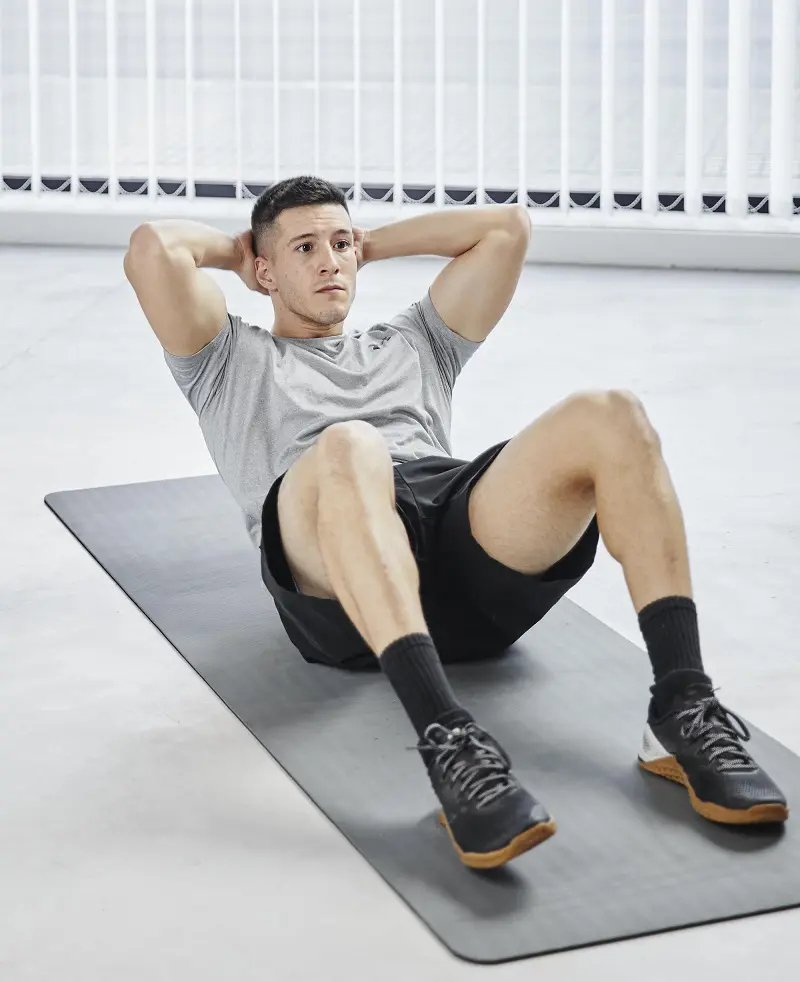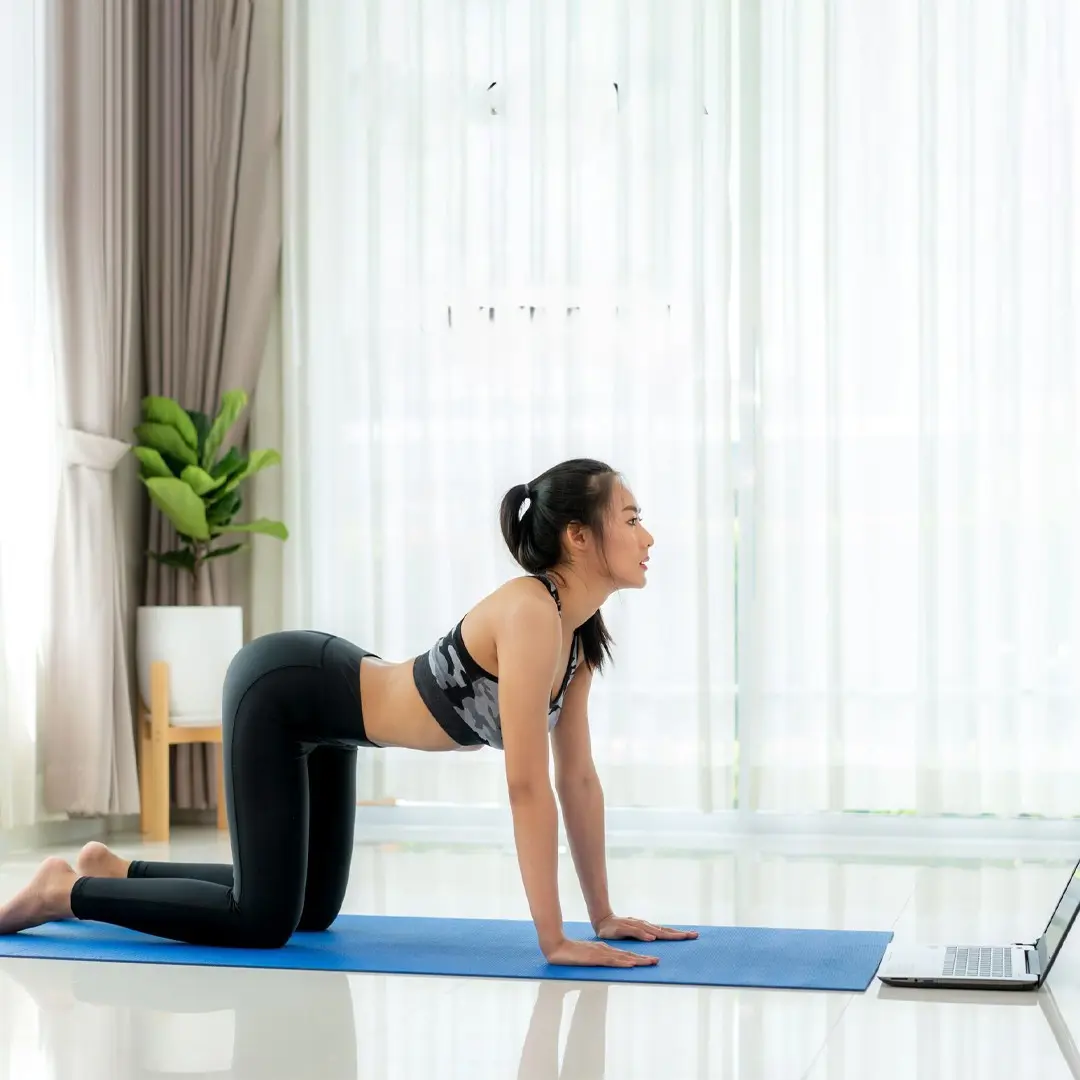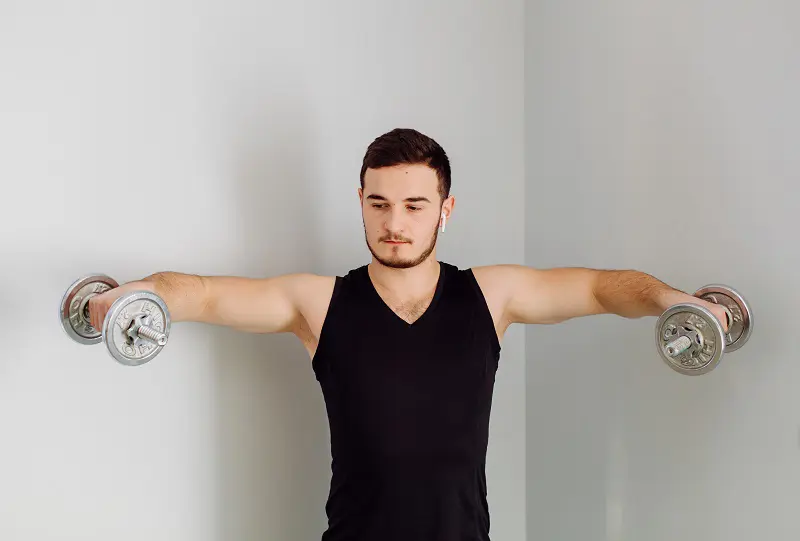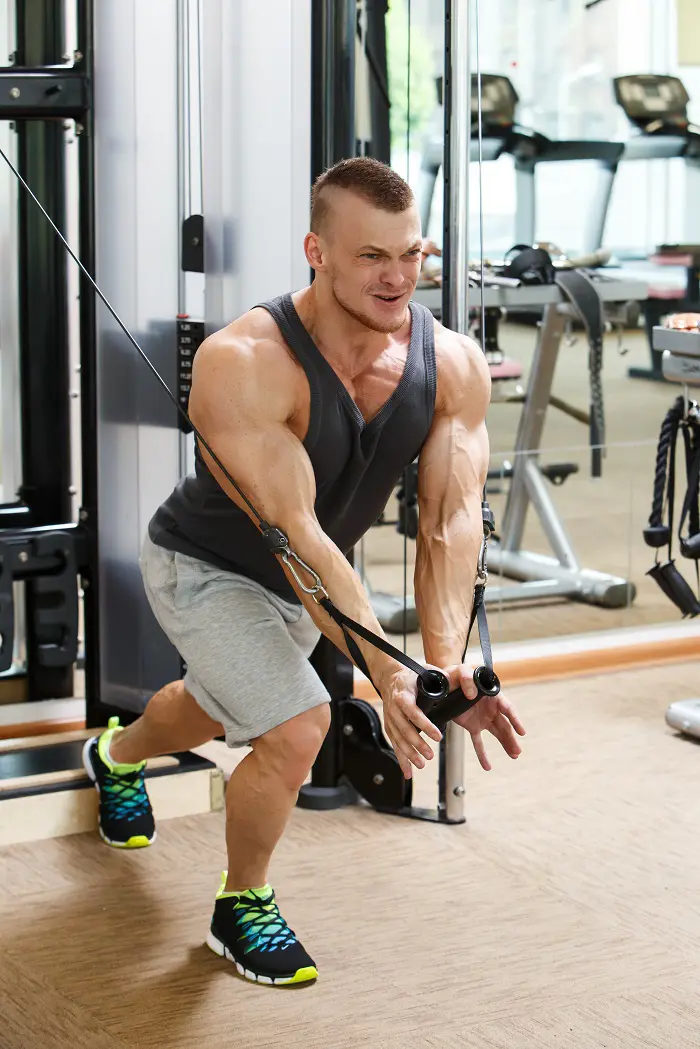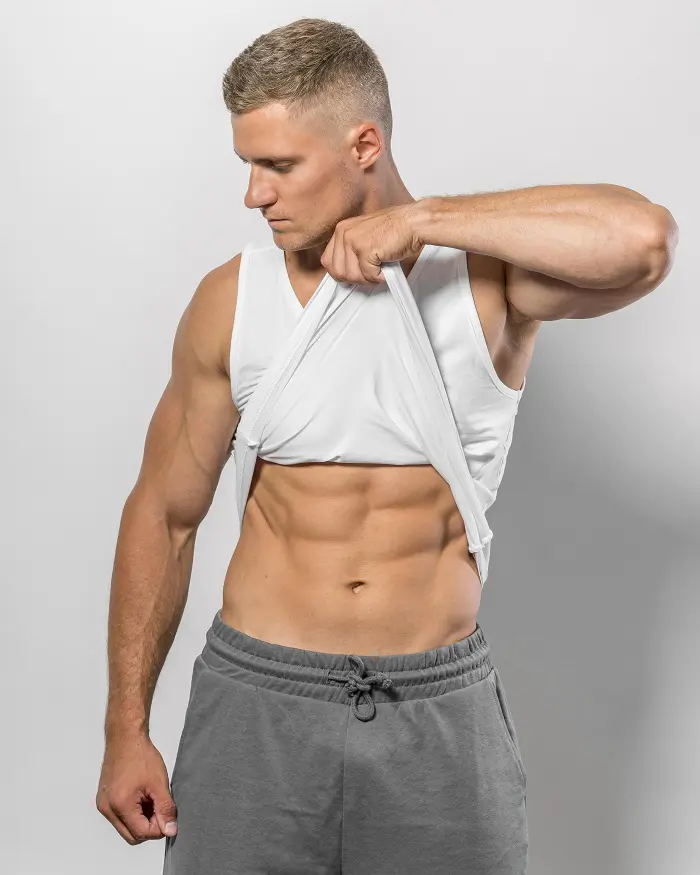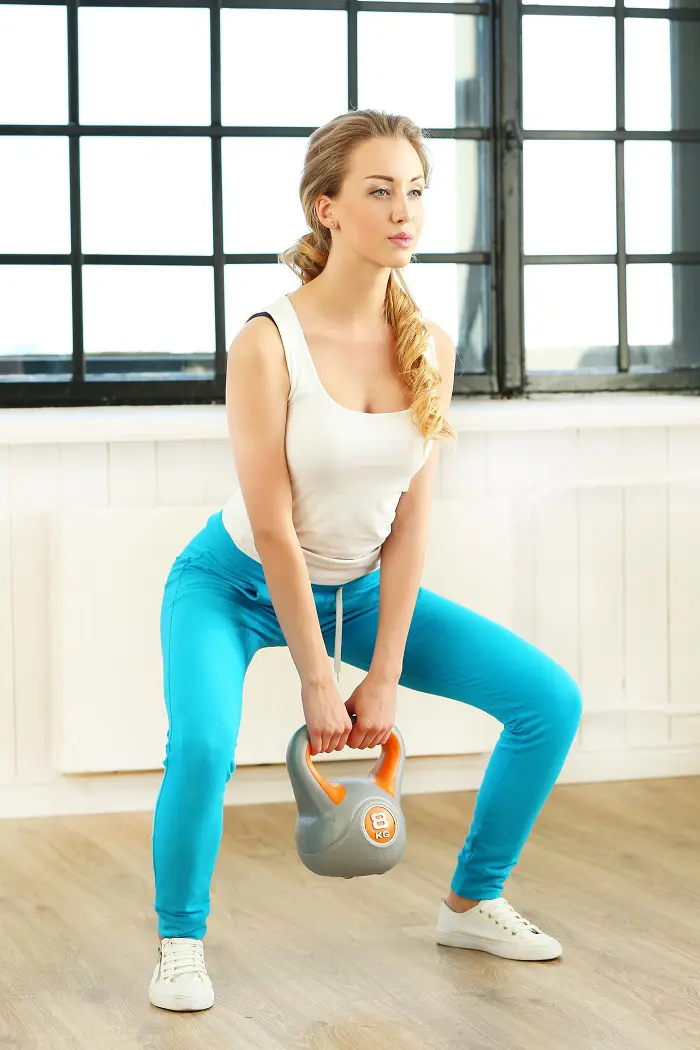How To Do Chest Fly Exercise: Methods, Benefits And Types
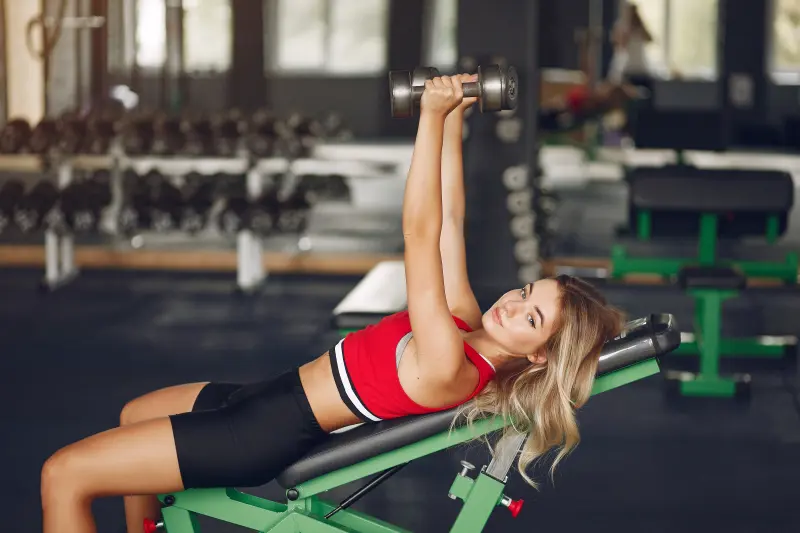
The chest fly is primarily done to strengthen the chest and the shoulders. It can be done while lying on your back on a flat or inclined bench and knees bent at a 90-degree angle.
People who just started their fitness journey can use a lighter weight or perform the exercise with just their body weight. After you gain proper form, you can add dumbbells or barbells to increase the difficulty. So, let's look at how to do chest fly exercise, its benefits, and variations.
How To Do Chest Fly: Step-By-Step Guide
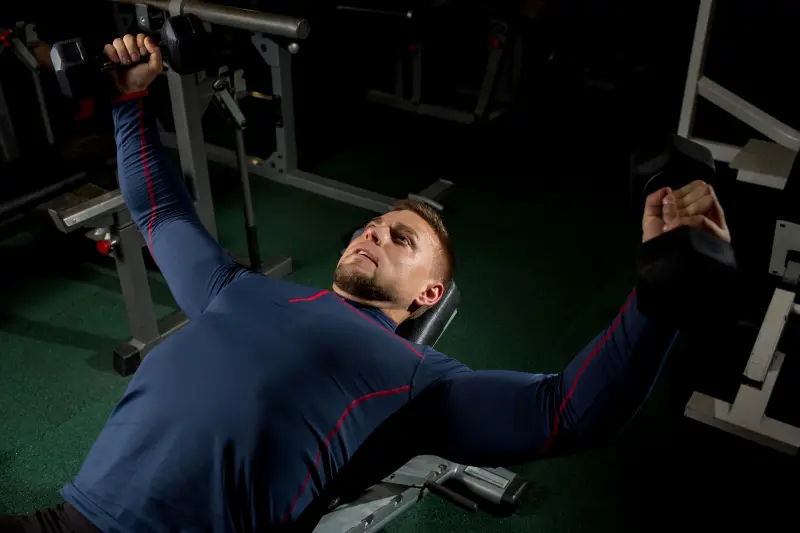
The chest fly is a strength-training workout that primarily targets the pectoralis major, the main muscle of the chest. This exercise gives your chest the Superman look and also works the anterior deltoids and biceps as secondary muscles. This exercise is versatile for fitness enthusiasts, as it can be performed using gym machines, dumbbells, resistance bands, or even cables.
To perform this exercise, you will need two 3-10 pound dumbbells and a flat bench to lie down. If you are a beginner, you can use 3-5 pounds, but if you need the more advanced option, consider using 8-10 pounds weights instead.
How To Do:
- First, lie flat on your back on an incline bench, placing your feet firmly on the floor on either side of the bench. Your head and back should remain pressed into the bench.
- Then, ask a spotter to hand you the two dumbbells, or gently pick them up from the floor and hold in each hand.
- Lift arms above the head so they are extended but not locked out. Your elbows should be bent slightly, and palms and dumbbells facing each other.
- Now, inhale and lower the dumbbells in an arc motion until they are in line with the chest. Then, your arms will be extended to the sides but not locked out.
- Exhale and slowly press the dumbbells up in the same arc motion.
- Perform 10–15 reps. Rest. Do 3 sets total.
Benefits Of Chest Fly
This exercise is ideal for increasing chest strength and muscle mass by targeting the pectoralis muscles. It benefits your pectoralis major, the larger of the two muscles responsible for movement at the shoulder joint. Other than the chest, it also works for the shoulders and triceps.
Like other strength-building exercises, the chest fly can help build lean body mass, enhance bone density, and increase base metabolic rate.
So, here are the major benefits of doing a chest fly workout:
1. Improved Flexibility
The chest fly especially targets the pectoralis major, a key muscle for chest movement that can tighten up if not properly stretched. It actively stretches the pectorals through a wider range of motion by opening up the chest, increasing flexibility in the chest and shoulder region.
It can lead to better posture and reduced upper body tightness when performed correctly. Also, by regularly performing chest flyes, you can enhance your breathing.
2. Enhances Range Of Motion
This exercise stretches the chest muscles by mimicking a hugging motion, where you extend your arms out, creating a stretch in the chest muscles. It allows for a focused stretch and contraction of the chest muscles throughout the movement.
The key to the stretch is the wide, controlled arc as you lower your arms to the sides, maximizing the stretch on the chest muscles. By maintaining proper form and slowly lowering your arms, you can effectively target the chest muscles throughout the full range of motion.
3. Improves Posture
When performed correctly, chest fly exercises not only target the chest but also the muscles of the upper back, especially the rhomboids and trapezius. This action counteracts the rounded shoulders and forward head posture, resulting from prolonged sitting, computer use, and other daily habits.
Creating balance between the front and back of the upper body is crucial to maintaining proper spinal alignment. Also, this can help to counteract the effects of slouching or hunching, which can lead to back pain and other postural problems.
4. Creates A More Angular Physique
They are the most effective exercises for the chest. This exercise involves lifting weights straight to your sides, then lowering them back down, often performed on a flat bench for optimal results.
You can perform with dumbbells or a cable machine, and it is easy to do anywhere - even at home. The move targets the several muscles in your upper body, including the chest, lats, rear delts, and upper traps. When done properly, chest flies help lengthen your upper back and shoulders for a better angular physique.
5. Increase Upper Body Endurance
The chest flies are a great way to increase your endurance in your upper body muscles. The shoulder joint has a crucial role in endurance exercise, making it essential to stabilize and strengthen it to prevent injuries.
Endurance is needed for sports or other physical activities that require strength such as martial arts. It can also keep you healthy into old age by keeping joints strong and healthy
Chest Fly Variations
1. Incline Dumbbell Chest Flys
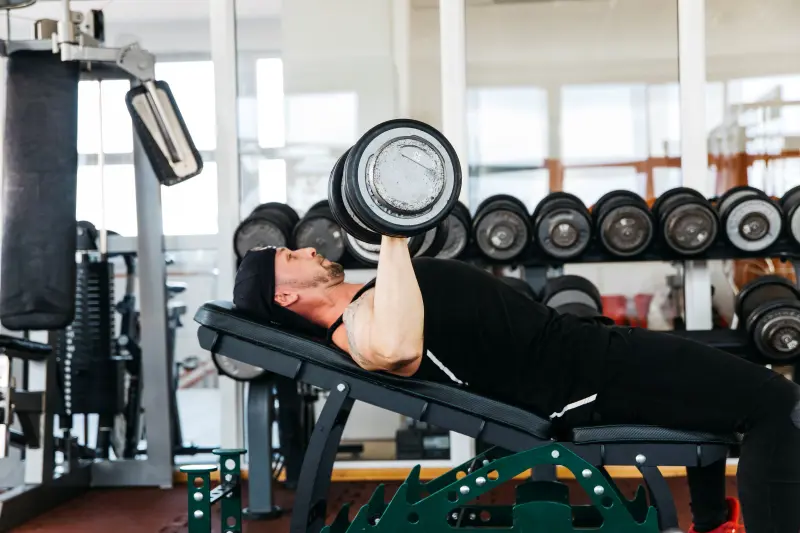
While the flat bench fly emphasizes your middle and lower chest muscles, the incline dumbbell fly specifically targets your upper pecs, gaining a more comprehensive and well-rounded development of your chest.
The incline chest fly involves less of your lower chest, so you can use lighter dumbbells than you would for a flat bench chest fly.
How To Do:
- First, set an incline bench to an angle of 30-45 degrees.
- Now, lie on the bench, holding a dumbbell in each hand with your palms facing each other.
- Then, hold the dumbbells directly above your chest. Your arms should be vertically upwards, rather than projecting out in front of your chest.
- Afterward, lower your arms to your sides in a wide arc with a slight bent in your elbows.
- Now, engage your chest to bring back the weighted dumbbells in a starting position.
- Repeat it 3-5 times with 10-15 repetitions.
2. Decline Dumbbell Chest Fly
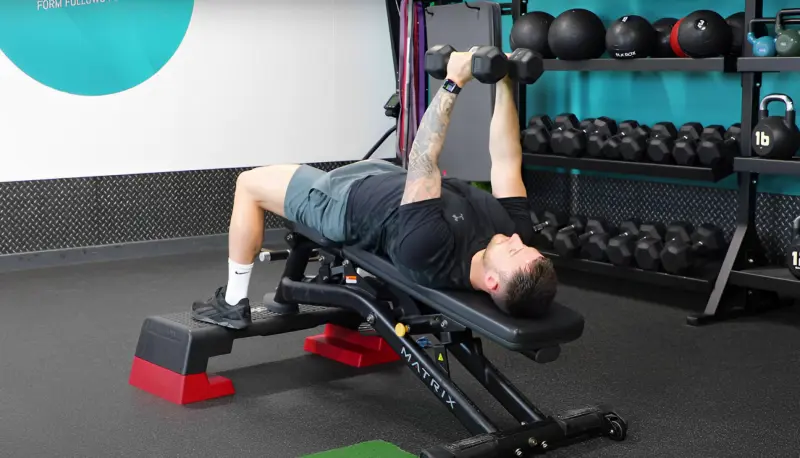
The decline variation puts more emphasis on your lower pecs. The angle of the bench where you lie down helps you isolate and target this area more effectively.
How To Do:
- First, set your bench to a decline of about 30 degrees and lie on the bench holding a dumbbell in each hand.
- Now, hold the dumbbells directly above your chest, with your palms facing each other.
- With a slight bend in your elbows, lower your arms to your sides in a wide arcing motion. You should feel the stretch in your chest.
- Then, use your chest to bring the weights back up to the starting position.
- Repeat for the desired number of repetitions.
3. Floor Dumbbell Chest Fly
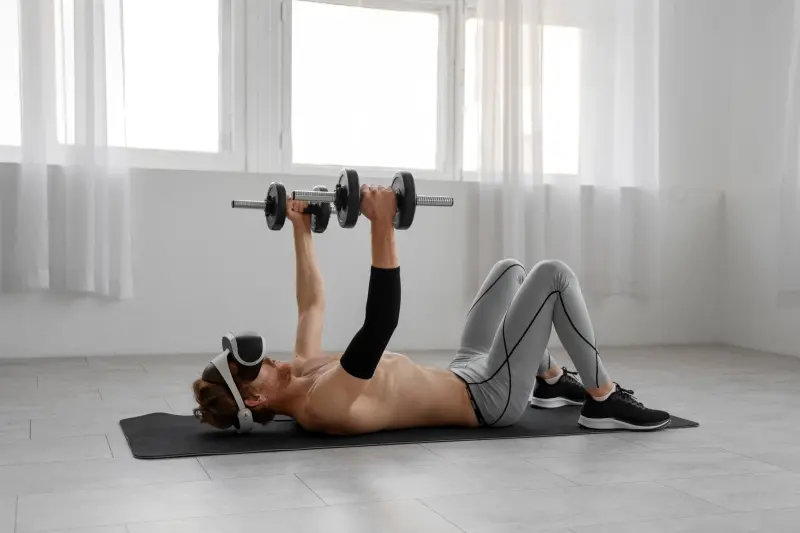
It might be difficult to perform the chest fly lying on the floor or an exercise mat. It is because you may have a limited range of motion since the elbows can get restricted by the ground.
However, for beginners, it makes a decent exercise to try before shifting on a bench to get full range of motion.
How To Do:
- Lie flat on your back on the floor. Hold a dumbbell in each hand.
- Bring the dumbbells together above your chest.
- Slowly lower the dumbbells out to your sides in an arcing movement.
- Hold a moment, then raise the dumbbells back to the starting position.
- Repeat for the desired number of reps.
4. Upward Cable Crossovers
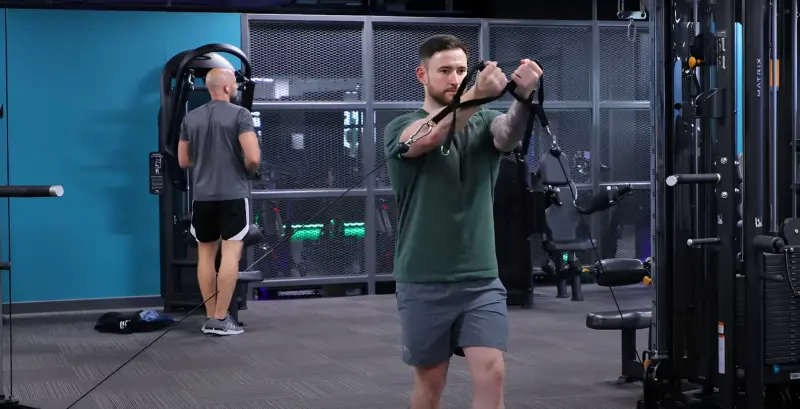
This exercise sees you pull the cables up and across your body, rather than down and across. This change in movement places more focus on your lower pecs.
How To Do:
- Before starting, adjust the pulleys to the lowest position available.
- Then, stand in the middle of the cable machine. Now, grab the handles with each hand and take a step forward so there's some tension in the cables.
- Keep your back straight and shoulders rolled back.
- Now, pull your hands up and across the body bending your elbows.
- Finally, return your arms to the starting position. Ensure you maintain tension in the cables at all times.
- Repeat for the desired number of reps.
5. Resistance Band Chest Crossovers
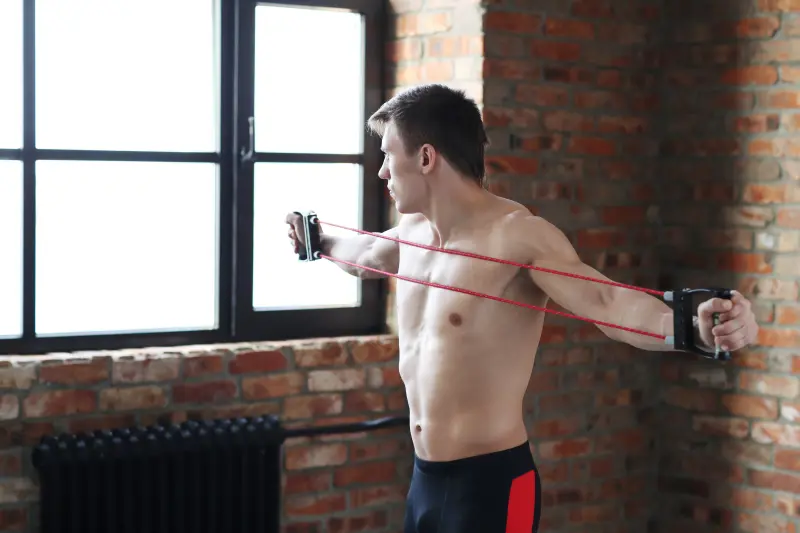
This variation of the chest fly uses a resistance band wrapped around your shoulders. The band provides a variable resistance which means the tension increases as you pull your arms across your chest.
This can make the exercise more challenging for beginners, but it is limited in progression. Once you have mastered this exercise, consider using cable crossover as well.
How To Do:
- Stand tall with your feet shoulder-width apart.
- Now, grip a resistance band and pull it behind your shoulders until there is some tension in the band.
- Then, with a bend in your elbows, pull your hands together across your chest. Continue until each hand touches the opposite shoulder.
- Afterward, squeeze at the peak of the movement and slowly return your back to the starting position.
- Repeat for the desired number of reps.
6. Stability Ball Chest Flys
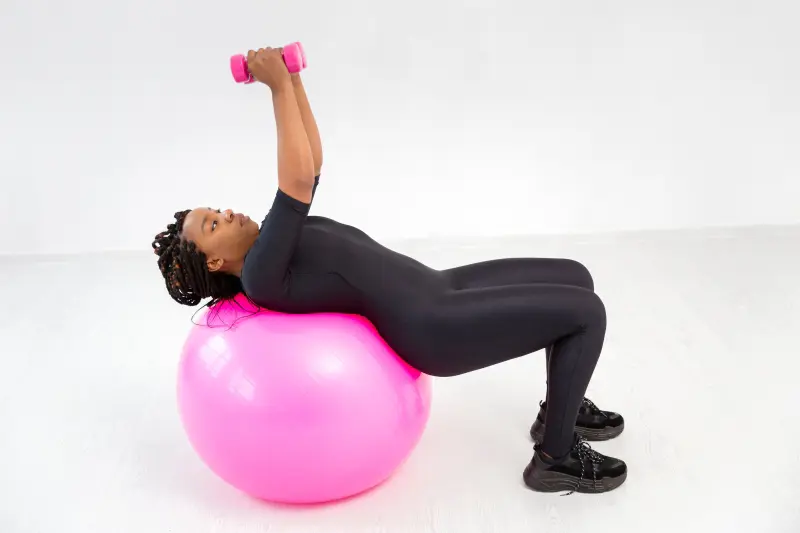
The stability ball introduces an additional challenge since it demands balancing skills and core strength.
This variation engages more muscles than typical chest flies and is a very useful exercise if you are looking to build better coordination and core stability.
How To Do:
- First, sit on a stability ball with a dumbbell in each hand.
- Then walk your feet forward and roll your back down until your upper back, head, and neck get supported by the stability ball. Keep your knees bent at a 90-degree angle.
- Hold the dumbbells directly above your chest with your palms facing each other.
- Then, slowly lower the dumbbells to your sides in a wide-arcing motion.
- Lower your elbows with your chest and raise the weights back up to the starting position.
- Repeat for the desired number of reps.
Tips To Consider
Here are some tips to consider while you are doing a chest fly using either a dumbbell or resistance band:
1. Use Slow Controlled Movements
Sometimes, it may be tempting to perform the chest flys quickly for the sake of intensity, particularly if you are using a lighter weight. However, you can slow down your movements.
The controlled movements increase the time under tension for your chest muscles. Also, it ensures maximum engagement, which increases the intensity and effectiveness of the exercise. Using controlled movements also reduces the risk of injury from dropping the weights too quickly.
2. Maintain A Slight Bend In Your Elbows
Keeping a slight bend in your elbows can prevent strain and injury. It also ensures that your chest is doing the work, rather than your arms.
Straightening your arms too much could shift the focus from your chest to your arms, reducing the exercise's effectiveness.
3. Keep Your Back Flat Against The Bench
Ensure you keep your back flat against the bench during the whole process. Keeping your back flat prevents you from using momentum to lift the weights, which could lead to injury. It also ensures you are isolating the chest muscles.
Recent posts
Fitness
Fitness
10 Core Strengthening Exercises For Beginners To Try At Home
A strong core is key to overall fitness - it helps improve posture, stability, and balance while cutting down the risk of injury. Whether you're new to working out or just looking to level up your core strength at home, these beginner-friendly moves ...
Fitness
How To Do Cat Cow Yoga Pose: Benefits, Techniques And Types
Cat Cow Yoga pose is an essential exercise that involves moving the spine from a rounded position to an arched one. Each movement is done flawlessly in conjunction with either an inhalation or exhalation of the breath, linking it to movement. This po...
Fitness
11 Upper Chest Exercises To Develop Toned And Strong Pecs
A well-defined upper chest improves posture and upper body strength along with your overall appearance. It takes certain workouts that focus on the clavicular head of the pectoralis major to target the upper part of the pectoral muscles. Including th...
Fitness
12 Best Cable Shoulder Exercises And Workouts
Shoulder workouts are essential for strengthening the deltoid muscles, improving range of motion, and enhancing posture. Using a cable machine can be a great way to build strong, well-defined shoulders. Cables offer a solid alternative to dumbbells a...
Fitness
A Guide On How To Get A Six Pack And Develop Shredded Abs
Six-pack abs come from having a low body fat percentage, which makes your abdominal muscles more visible. To get them, you need a mix of factors - solid diet, regular workouts, and a consistent training routine. Building strong ab muscles takes time,...
Fitness
12 Weight Bearing Exercises To Enhance Bone Density
When practicing weight bearing exercises, your legs will support your body weight. These workouts include resistance and balance training, which help strengthen your bones and muscles. This category includes many bodyweight moves, like push-ups, squa...
